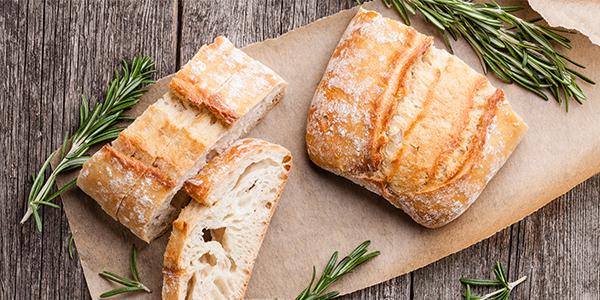Want to learn more about gluten-free diets? We’ll take you through all the things you need to know about gluten, and what you should consider when deciding if it should be part of your diet.

Allow Us To Introduce You To Our Frenemy Gluten.
Gluten is all things delicious; it gives things like pasta and pastries their volume, texture, and appearance. It’s even what keeps pizza dough together when the pizza man tosses it in the air. But like all things delicious and yummy, it comes with some baggage.
What is gluten and how is it formed?
Gluten is a protein that forms when two water-insoluble proteins in wheat (glutenin and gliadin) are hydrated with water and mixed. Once bonded and gluten forms it provides structure and strength. It is found in Semolina, Bulgar wheat, Durum wheat, Einkorn wheat, Spelt, Barley, Malt, Rye, Kamut, Tritical.
Keep in mind is that not all wheat and ryes contain the same amount of gluten and not all recipes contain the same ratio of gluten. For example, a soft cake will contain less gluten than that of a chewy pasta. Due to its textural properties, it is also found in products you wouldn’t associate with wheat and ryes like imitation meats, soy sauce, dressings, gravy, ketchup, canned soup, stock cubes, frozen or canned vegetables in sauce, and ice cream.
How does gluten affect a person?
The thinking is that a typical digestive system can handle proteins like gluten, and it either absorbs it as peptides through the intestine, or passes it through the body. One line of thinking is that the problem is due to the fact that over the last 40 years, through scientific endeavors, grains like wheat have been edited and altered for yield and resistance to disease and climate.
While there have been significant benefits, like the ability for consumers to readily purchase an inexpensive loaf of bread, there have also been consequences, one of which is an increase in gluten sensitivities, which can result in symptoms ranging from bloating to physical irritability. Humans haven't had time to adapt the ability to breakdown these super-powered ingredients and proteins.
There are also groups of people that are hyper-sensitive to gluten. This hyper-sensitivity is more commonly known as Celiac disease (gluten-sensitive enteropathy), an immune reaction in the small intestine that is triggered by eating gluten. When individuals with Celiac disease eat gluten, a reaction occurs that causes damage to the lining of the small intestine. This can lead to long-term health problems ranging from anemia, loss of bone density, ulcers, headaches, joint pain to acid reflux and heartburn.
There are also individuals who have gluten sensitivity, but do not have Celiac disease or allergies. Instead, they react negatively to gluten.
To gluten or not to gluten?
There have also been claims that gluten-free diets lead to increased levels of energy, decreased inflammation, and a reduction in digestive symptoms like gas and bloating. The jury seems to still be out on whether gluten can have a direct impact on things like energy-levels; however, there may be an indirect correlation, as many gluten-free diets result in a decrease in sugars, unhealthy fats commonly found in processed foods.
Here are some recommended foods, by the Mayo Clinic, that are naturally gluten-free: unprocessed beans, seeds, and nuts, fresh eggs, fresh meat, poultry and fish, fruits and vegetables, most dairy products. Mayo also recommends these grains and starches: amaranth, Arrowroot, buckwheat, corn and cornmeal, flax, gluten-free flours (rice, soy, corn, potato, bean), hominy (corn), millet, quinoa, rice, sorghum, soy, tapioca, teff.
Gluten-free diets can promote health because they force individuals to eat more fruits and veggies and stay away from processed foods and baked goods that are usually heavy in calories and sugars and low in nutritional value. The one warning we do have is around the label of “gluten-free.” Just because a product has a gluten-free label doesn’t mean it is good for you, especially if it is heavily processed.
Did you know that all of That’s it.’s products are gluten-free? That’s right, everything. All of our products contain five ingredients or fewer, and we don’t add preservatives, dyes, or other processed ingredients. That means you can feel good knowing that our gluten-free snacks are made with clean, simple ingredients. If you’re looking for an easy way to eat more fruits or veggies, our gluten-free snack bars are your answer. And for something sweet, try our dark chocolate fruit truffles! Click below to shop any of our gluten-free snacks!
Are you gluten-free? If so please share your story with us on social using hashtag #snackit.
Shop Gluten-free That's it. Snacks

